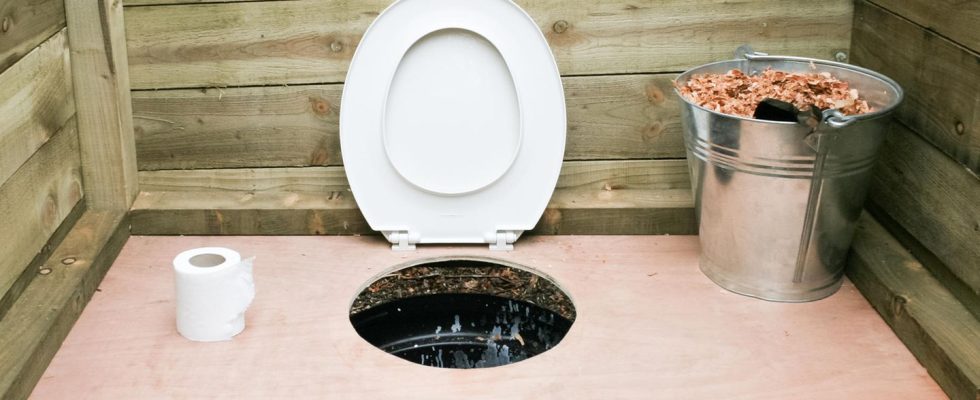Without chemicals
Composting toilet for the garden: This is what you need to consider before using it
It makes sense to purchase a composting toilet if you need to relieve yourself in the garden
© pastie / Getty Images
No waste water may be drained into the ground in your home (small) garden. Accordingly, installing a water-powered toilet is not possible. If you still want to relieve yourself in the garden, you are twice as well advised to have a composting toilet.
In contrast to a classic outhouse, the composting toilet has a decisive advantage: the excreta collected in it (i.e. feces and urine) are processed into nutrient-rich humus and – as strange as it may sound – returned to the natural nutrient cycle. In other words, our legacies can be used as plant fertilizer. This makes a composting toilet an economically and ecologically sensible alternative to a chemical toilet. How this works in practice and what you need to consider before using it is summarized in this article.
How to use a composting toilet correctly
Unlike a chemical toilet, human waste is collected in a container Bark mulch or Eco shavings is filled. The litter primarily serves to control odors by binding liquids. But how exactly does composting work – and how is the organic toilet cleaned afterwards? We’ll explain it to you.
1. How it works
The principle of one Composting toilet is easily explained: First, the excretions are placed in the collecting container underneath or in one compostable garbage bags collected and covered with litter – then disposed of in the garden compost (including toilet paper). Pre-composting begins while it is being stored in the organic toilet, but it still takes at least two years before you can reuse the finished compost in the kitchen garden. To speed up the process, you can also add biological waste from the garden to the compost heap. Water, on the other hand, is more of a hindrance, so the collection point should be protected from rain. Be it through a cover (make sure there is sufficient oxygen exchange) or a shelter.
2. Cleaning
Another question concerns cleaning a composting toilet. In contrast to a conventional toilet, there is no running water, so neither a classic toilet brush nor an aggressive cleaning agent is recommended for cleaning. In fact, you can only clean the seat surface superficially, for example with a clean cloth and a little dishwashing liquid – or you can use one Disinfectant spray to combat and eliminate possible bacteria on the toilet seat.
Tip: By the way, many mobile devices can be used Camping toilet convert into a composting toilet.
3. Legal
Pathogens that pose a health risk can be found in human excretions such as feces and urine. For this reason, according to the World Health Organization (WHO), it is essential that you let the natural fertilizer that you “grow” in your compost rest for at least 24 months – this is the only way it can become hygienically clean. However, by pasteurization (i.e. heating to at least 70 degrees, for example in an oven) you can reduce the long-term process to two hours. From a legal point of view, the only important thing for you to know is that the exploitation of a Composting toilet does not cause any problems in your home (small) garden. However, you may not use compost made from human excrement for commercial or agricultural garden areas. That is forbidden.
This is how the residue becomes compost
If you are still wondering how human excrement can be turned into natural fertilizer: With the help of numerous microorganisms such as worms, bacteria, algae and fungi, the waste is decomposed and processed into fine compost.
Important to know: Alternatively, the residue from the composting toilet can also be disposed of in the organic waste bin if you are not interested in using it to make humus for the garden.
You might also be interested in:
This article contains so-called affiliate links. Further information are available here.


